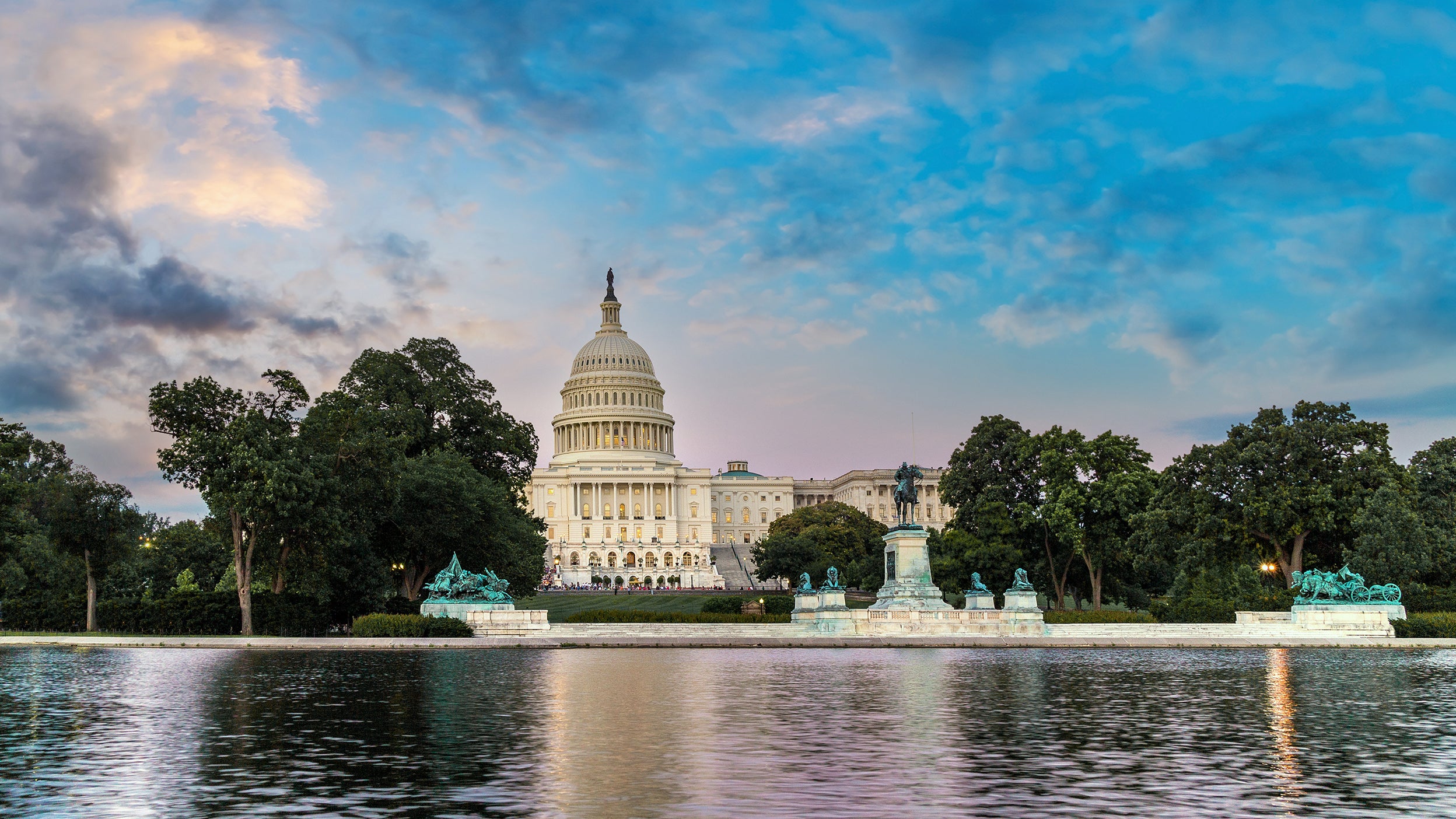
Legislative and regulatory 2026 Global Policy Outlook
Our team covers each region’s political contests, fiscal initiatives, and regulations, and examines how these issues may impact the financial landscape.

Both the GENIUS Act and the CLARITY Act have passed in Congress with bipartisan support, marking crypto’s first legislative milestone since the creation of Bitcoin.
Following “Liberation Day,” congressional leaders across both parties are stepping up involvement in trade policy, amid growing economic and legal uncertainty.
We highlight some key individual and corporate tax modifications in this nearly 900-page piece of legislation.
In the aftermath of “Liberation Day,” both the US and markets around the world are preparing for a new age of trade. Coupled with the Trump administration’s successful passing of the “One Big Beautiful Bill,” impacts will be felt not just in the US, but worldwide.
The OBBBA not only extended the first Trump administration’s Tax Cuts and Jobs Act of 2017, but included other Trump campaign tax promises. For corporations, OBBBA permanently restores immediate expensing for domestic research and development expenses, reinstates the EBITDA-based limitation on business net interest deductions, and restores 100% bonus depreciation for short-lived investments. It also temporarily provides 100% expensing of qualifying structures, makes Section 199A pass-through deduction permanent, implements a 1% floor on deduction of charitable contributions made by corporations, and eliminates the IRA clean electricity production credit and investment credit for projects after 2027.
Threading the needle on trillion-dollar legislative packages is a challenge, particularly when it involves healthcare changes like Medicaid and personal income tax modifications like the State and Local Tax deduction. Despite some consternation from different voting blocks, Congressional Republican leadership were able to muscle the bill through with the support of the President to meet his aggressive deadline. Time will tell what impacts the tax and spending policies will have on various communities and industries, but there will certainly be political consequences for both parties. Voters will get their chance to grade Congress in roughly 15 months.
Two recent bills have provided the US crypto industry its first legislative milestone since the creation of Bitcoin. The GENIUS Act establishes federal oversight of the $250 billion stablecoin market, while the CLARITY Act aims to mitigate SEC-CFTC jurisdictional complications that have created compliance nightmares. But these legislative victories raise important questions about whether Washington has delivered true clarity or simply created more sophisticated regulatory complexity.
With GENIUS being signed into law on July 18, all attention is now on getting market structure reform across the finish line. The CLARITY Act’s ambitious one-year implementation timeline faces significant challenges, as the complex division of authority between multiple agencies creates potential friction points. The passage of these bills marks the beginning of a new regulatory era.
Congressional leaders across both parties are stepping up involvement in trade policy, amid growing economic and legal uncertainty. Tariffs have become a flashpoint in both chambers, with lawmakers questioning the Trump administration’s legal authority and the strategic logic behind the sweeping measures. While the White House touts its wins, Democrats have called for immediate hearings on the economic fallout, citing the retaliatory tariffs imposed by China (up to 84%) and the EU ($22 billion in targeted duties) as direct threats to US exporters. Republican sentiment is divided.
As investors brace for possible disruption given these uncertainties, exacerbating fears of inflation and prolonged supply chain instability, lawmakers are urging the administration to provide clearer metrics on the tariffs’ expected impact and justification. Whether through oversight, legislative reform, or emergency intervention in the event of a legal defeat, Congress has been more engaged in the deliberations shaping the next phase of US trade policy.
In a surprise announcement on June 26, the US Treasury Secretary, the House Ways and Means Committee Chair and Senate Finance Committee Chair made a joint statement confirming agreement to remove the proposed section 899 from the OBBBA, which was designed to target “unfair foreign taxes” and would have caught the EU in crosshairs.
Recent U-turns over planned cuts to the government’s welfare budget have underscored tensions between the Labour Government and its backbench MPs, setting the scene for a further tax-raising budget in the Autumn. As to which taxes will rise, we will see continued conjecture between now and the Budget.
Australia appears to be pursuing a diversification strategy in response to the 10% tariffs imposed on April 2: Over the past few months, Australia has deepened ties with regional partners, most notably its largest trading partner China, in the mining and education sectors, accounting for more than 60% of total trade. This should boost Australia’s economy.
Tariffs on Chinese exports to the US are 40%. Its negotiations with the US are on a separate track than other countries, with a deadline of August 12 before tariff rates could return to over 100%. However, US Treasury Secretary Bessant has recently suggested that the deadline is “flexible.” China has also publicly cautioned other countries against entering trade arrangements that might undermine China’s position.
On July 22, President Trump announced Japanese exports to the US will face a tariff of 15%. In return, Trump said Japan would “open” its market to US goods and commit to investing $550 billion in the US. However, there remains some uncertainty, particularly over the $550 billion investment. In addition, Japan’s chief negotiator has said the deal does not include commitments on defense or reductions of the 50% US tariffs on steel and aluminum.
On July 30, the US and South Korea announced a preliminary agreement that would impose a 15% baseline tariff on South Korean imports, which is less than the 25% tariff announced on Liberation Day. In exchange for the lower tariff, South Korea agreed to invest $350 billion in the US, $150 billion of which would be dedicated to shipbuilding cooperation. Additional investments will be made in US energy, semiconductors, batteries, and biologics.
Explore our comprehensive analysis of policy issues to watch in the second half of this year.

Our team covers each region’s political contests, fiscal initiatives, and regulations, and examines how these issues may impact the financial landscape.

As Chief Justice John Roberts starts his 20th year in the court, the conservative 6-3 majority SCOTUS will make decisions with profound generational implications.

How long will the government shutdown last, what off-ramps are available to reopen the government, and are permanent cuts to federal jobs in the cards?
Important information
NA4760015
Photo Credit: Tanarch/Getty Images
The opinions referenced above are those of the author as of July 30, 2025. These comments should not be construed as recommendations, but as an illustration of broader themes. Forward-looking statements are not guarantees of future results. They involve risks, uncertainties and assumptions; there can be no assurance that actual results will not differ materially from expectations.
This link takes you to a site not affiliated with Invesco. The site is for informational purposes only. Invesco does not guarantee nor take any responsibility for any of the content.